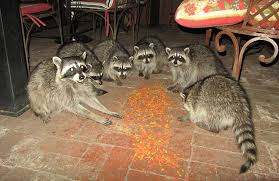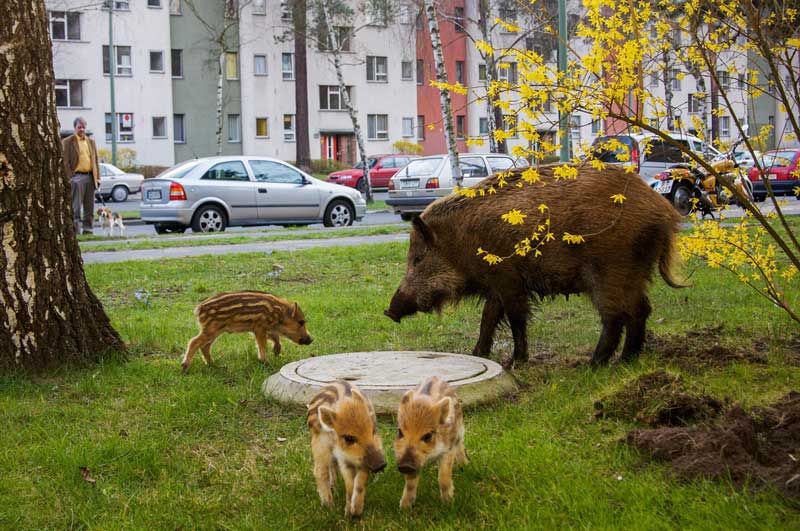RiskVA
Uh Oh! We’re Surrounded! 31 Aug 2005
Once upon a time (my favorite story beginning) East Texas was pretty much empty of people. Pine forests interspersed with lowlands and streamside woodlands covered the region. Wild animals were everywhere. Then, we came along – Homo sapiens, humans, 2-legged skulking varmints. We commenced, as we had done with great enthusiasm further east, to hack down the trees for firewood and building materials and provide a clear field of fire to prevent others of our species up on us. Since we weren’t too good at living entirely off the land as it stood, we tore it up with plows and planted civilized crops. Generally, we were pretty successful and people being the way they are, we began to prosper. You could tell that by how rapidly we multiplied – not quite as fast as rabbits, but close. Family plots became farms, farms became corporations, small industry became major enterprises, settlements became villages, then towns, cities, metropoli, and megalopoli, and lo and behold, you couldn’t even recognize the old place anymore.
As all this growth was taking place right smack dab in the middle of wildlife habitat, the wild critters had to move. And that was all right with us, because most of the people living in towns and cities were just a little spooked by the idea of wild animals. They’d become citified flatlanders.
So, here we are in the 21st century, camped out in our temperature and light controlled growth chambers with attached garages to accommodate our gasoline powered, mobile environmental chambers and surrounded by wild critters. That give you an uneasy feeling? Well here’s a thought for you. What if all the wild varmints got organized and decided they wanted everything back?
Actually, we’re pretty well infiltrated already. Oh, there’s been no frontal assault, just sly, mostly nonviolent, insurgent action. Raccoons and possums roam through city neighborhoods – mostly at night - raiding garbage cans and eating pet food left outside. Skunks saunter boldly through urban landscapes, scavenging meals. Cougars have been sighted leisurely sunning themselves in local backyards. Nervous yet? In California cougars and coyotes have attacked joggers, bicyclists and small children. Remember Alfred Hitchcock’s movie entitled The Birds? Are sullen birds gathering in increasing numbers in trees and along your power lines? How about all those vultures circling overhead? What are they up to. They’re waiting, just waiting.
What about cockroaches, millipedes, centipedes, spiders, scorpions, flies, mosquitoes and a myriad of other insects and arachnids? Mice, rats and snakes? We have plenty of them right in town. They’ve learned to live with us quite well. Could they be the first wave of a counter-attack?
Our home is barely outside the city limits, a mere stone’s throw from schools, shopping centers and urban sprawl, yet the variety of wildlife we see is amazing. Foxes, bobcats wander the woods and roadrunners dart across the road ahead of our car, armadillos waddle along, deer graze our backyard grass. Our peach trees are magnets for wild creatures. The other day eight wild pigs were snuffling around our backyard looking for fruit. (Yes, I opened fire on ‘em.) Then came the lone coyote we see so frequently wandering possessively through the yard. (No, I didn’t shoot at him.) This time he stopped, eyed the peach tree and began to lazily scratch around under it to see if any sweet morsels were still to be found. His friends frequently serenade close to our house. Deer are constant visitors. Most recently four bucks spent a leisurely time nibbling peach leaves and an occasional peach while we stood in plain view watching them. Crows keep a constant patrol running as the peaches ripen. Squirrels are expert peach and pecan thieves. Raccoons and possums add to the list of scroungers.
The bottom line is simple. Wild nature is just on pause. Imagine for a minute what would happen if we stopped weeding, mowing, blacktopping, sealing, pruning, painting and repainting for a while and just let humidity, mold and mildew take their natural course. We’ve all seen deserted buildings and homes crumbling back to earth as grasses, weeds, scrubs and trees reclaimed them and animals again occupied land they had temporarily allowed us to use. Yep, I can see it all. A grizzled old timer stands gazing at a tangled forest, reminiscing. “Yep,” he says. “Ah kin remember whin thar wuz a good sized city raht heah where these trees is! Used to call it Naca-something. Oh, I remember. It was called Nacogdoches, but now it’s all gone. Sorta jist become Naca-nowhere.”
Nah! Never happen.
Probably.
Dr. Risk is a professor emeritus in the College of Forestry and Agriculture at Stephen F. Austin State University in Nacogdoches, Texas. Content © Paul H. Risk, Ph.D. All rights reserved, except where otherwise noted. Click paulrisk2@gmail.com to send questions, comments, or request permission for use.


